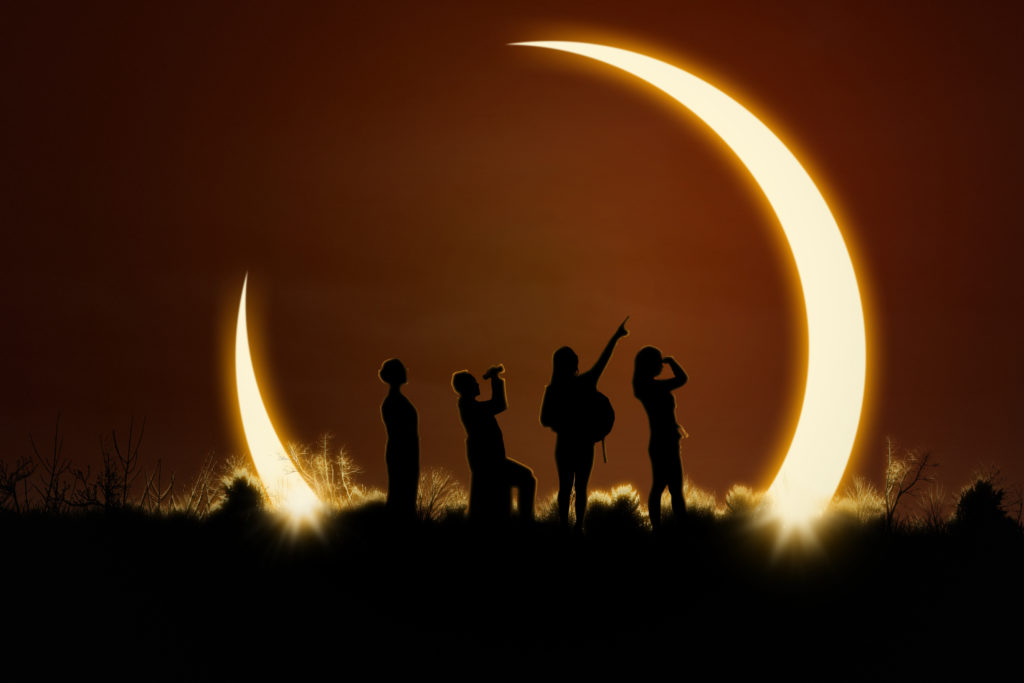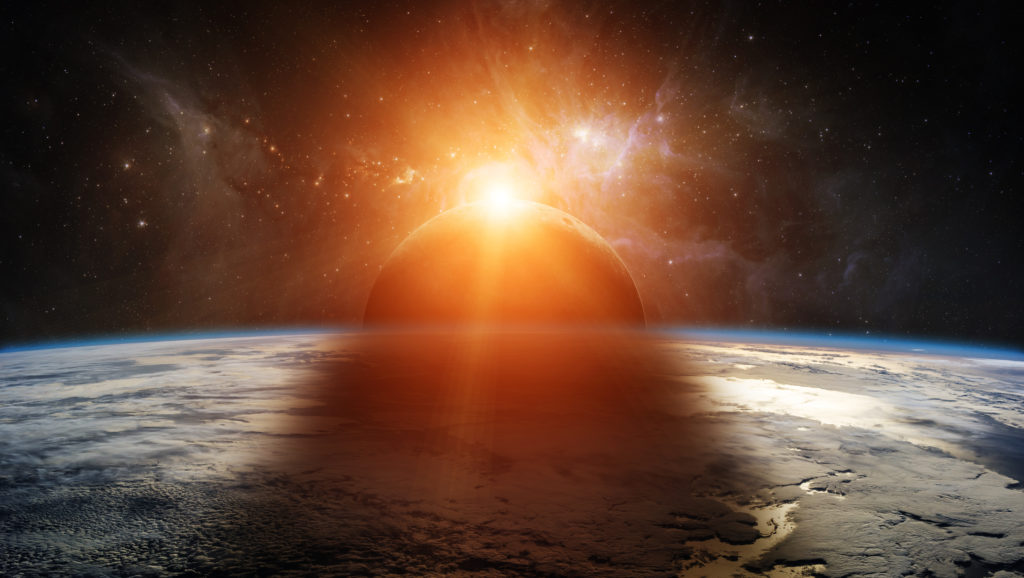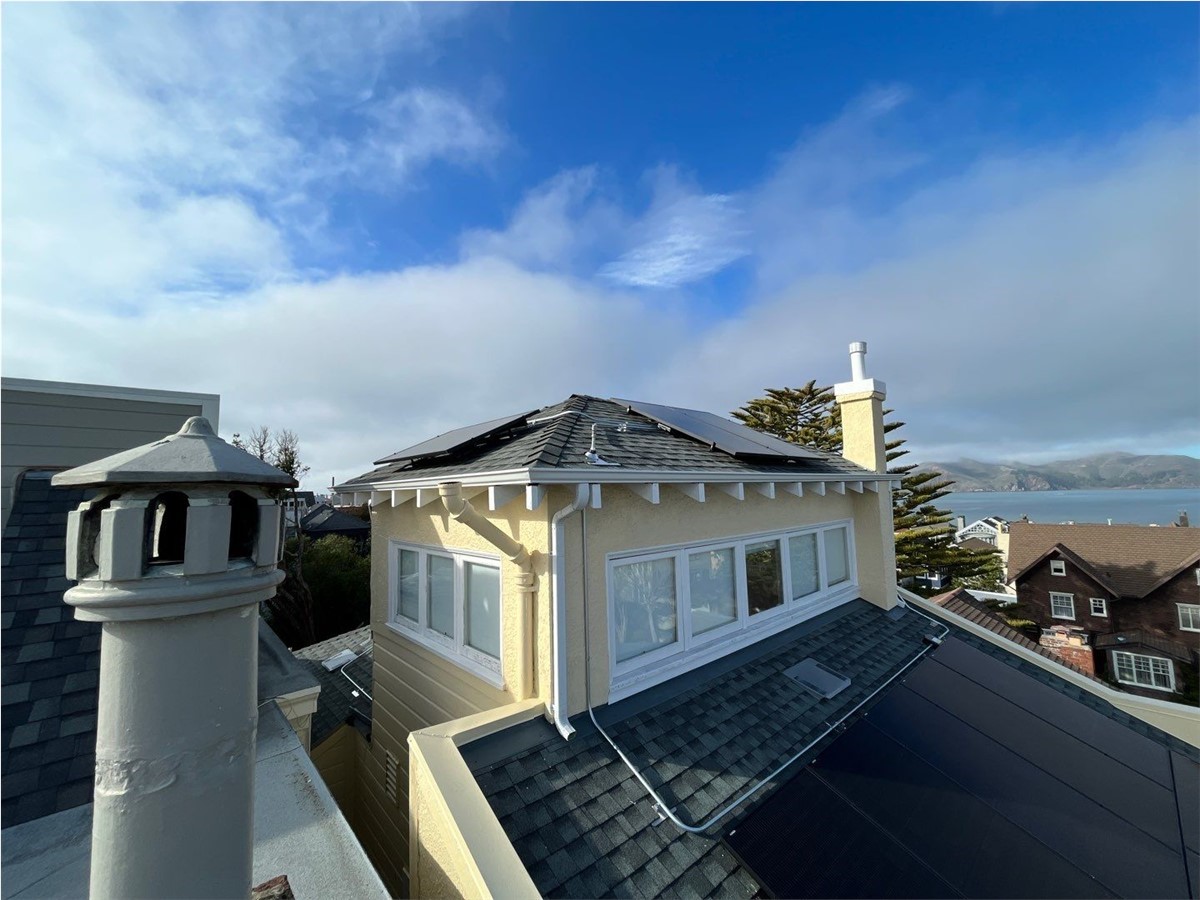 If you haven’t been paying attention, then Monday, August 21 might seem like the end of the world. Temperatures will suddenly drop by as much as 25 degrees and the sky will become abnormally dark for being mid-morning. Don’t worry; it’s not the apocalypse, it’s just the Great American Eclipse. It’s been nearly 100 years since we’ve had a total eclipse travel from coast to coast, so this is kind of a big deal! While there’s usually a total solar eclipse somewhere every few years, it’s pretty rare to have such a huge portion of the population to have a good view.
If you haven’t been paying attention, then Monday, August 21 might seem like the end of the world. Temperatures will suddenly drop by as much as 25 degrees and the sky will become abnormally dark for being mid-morning. Don’t worry; it’s not the apocalypse, it’s just the Great American Eclipse. It’s been nearly 100 years since we’ve had a total eclipse travel from coast to coast, so this is kind of a big deal! While there’s usually a total solar eclipse somewhere every few years, it’s pretty rare to have such a huge portion of the population to have a good view. It’s chaos out there.
People are flocking by the hundreds of thousands to get into the path of totality. That’s the narrow band from the Oregon coast to Charleston that will briefly see the sun be completely covered by the moon. Even days before the event, Central Oregon is already struggling with traffic being backed up for miles and miles, even at 5AM! Idaho expects to see anywhere from 100,000 to 500,000 people cross into their state to find an optimal viewing point for the eclipse. That’s a lot of people! In any area where the sun will have total coverage, eclipse mania has ensued. Schools and businesses are shutting down, the National Guard is being activated, and the BLM is very concerned about the dangers of forest fires in the Northwest due to the hundreds of thousands of extra people packing into campgrounds. Even here in San Francisco, where we are only getting a partial eclipse, this major cosmological event is expected to cause heavy traffic (as if we didn’t have enough) and reduce our power production for a couple hours. Such is the chaos that results from an organized population that understands what is happening. What would it be like if you didn’t know it was coming and suddenly the sun stopped shining?Eclipses in the Ancient World
 Even among societies with the knowledge needed in astronomy and mathematics to predict eclipses, they still had their myths and images surrounding such significant and rare events. Most civilizations whose records survived described solar eclipses as some form of a god, demon, or beast consuming the sun. These were usually accompanied by rituals in an attempt to preserve the sun. Here are some of the most interesting eclipse beliefs through the ages.
Even among societies with the knowledge needed in astronomy and mathematics to predict eclipses, they still had their myths and images surrounding such significant and rare events. Most civilizations whose records survived described solar eclipses as some form of a god, demon, or beast consuming the sun. These were usually accompanied by rituals in an attempt to preserve the sun. Here are some of the most interesting eclipse beliefs through the ages. Mayans
The Mayans were able to predict eclipses hundreds of years into the future, and the defining image for that civilization was that of a snake eating the sun. Mayans referred to solar eclipses as “chi’ ibal kin”, meaning “to eat the sun.” During an eclipse, other celestial objects, such as Venus, often become visible, which in ancient times, was seen as a demon and a possible sun saboteur.Vikings
Nordic lore gives us a fascinating tale of two sky wolves, Skoll and Hati, who perpetually chase the sun and moon, respectively. When Hati occasionally catches the moon, it turns red. Likewise, when Skoll eventually catches the sun it fades into darkness. Like most canines, they eventually let go of their chew toys.Indians
Hindu mythology tells of a demon, Rahu, who was able to get his hands on a magic elixir of immortality. The sun and moon told Vishnu about Rahu’s exploits, and the great god beheaded the demon. However, Rahu’s head still maintained its immortality. Like a celestial Pac Man, Rahu chases the sun and the moon through the heavens, attempting to swallow them when caught, though they simply pass right through him.Viewing the Eclipse in San Francisco
San Francisco might be too far south for a total solar eclipse, but we are still going to see most of the sun become obstructed by the moon. Assuming it isn’t cloudy, you should be able to see the eclipse from anywhere you have a good view of the sky, but here are a few prime spots to view this once-in-a-lifetime event. Just be prepared for major disruptions in services and traffic, and make sure to wear eye protection. If you plan on watching, make sure you’re in your seat early, because the show starts at 9:01 am (PDT). At that time, the moon will be touching the sun’s edge, reaching its maximum coverage at 10:15 am. By 11:37 am, this spectacular sight will have reached its conclusion. %Mr. Roofing San Francisco’s residential & commercial roofing expertsTags
Subscribe to Mr. Roofing's Blog









Comments